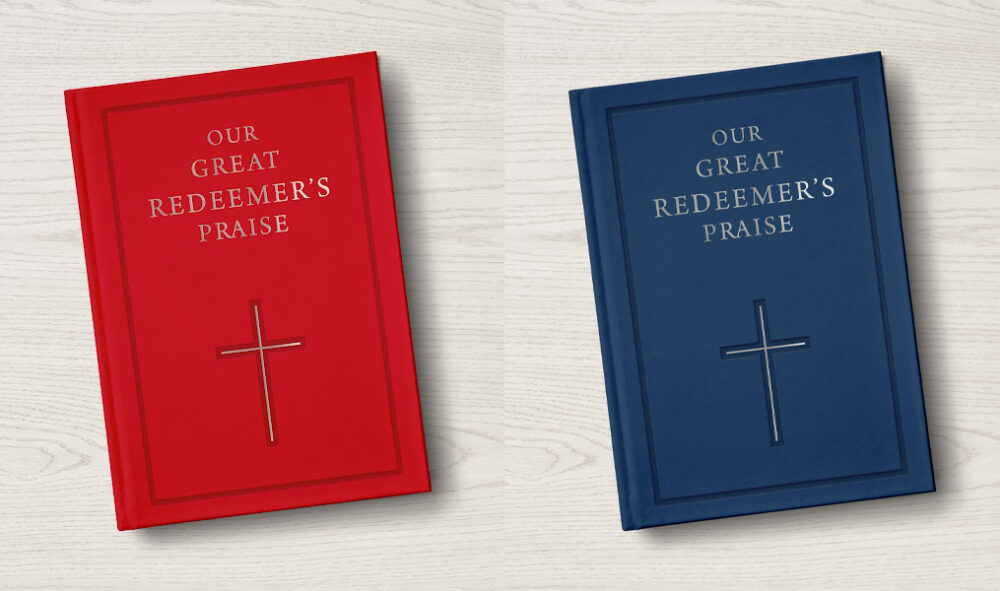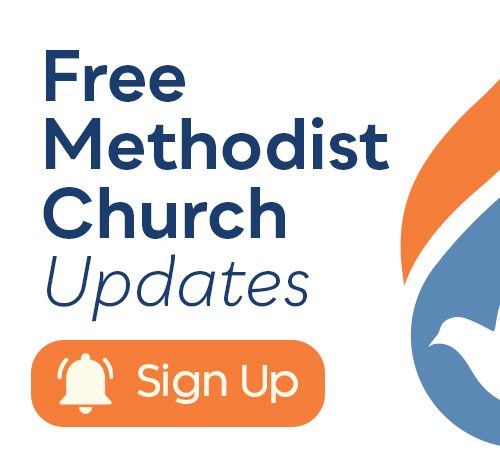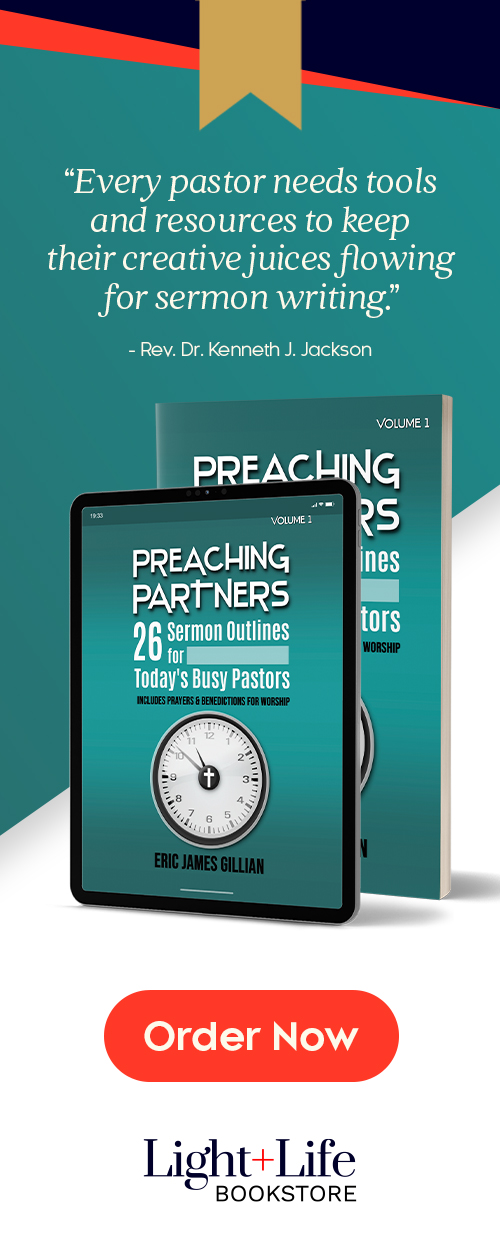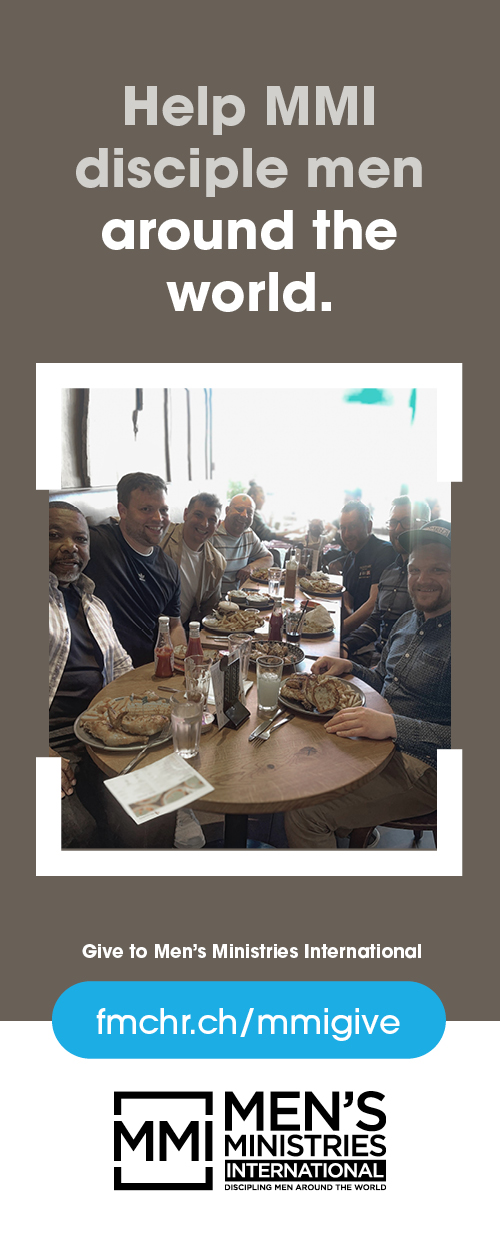
Andrew Miller
Andrew Miller is the director of publishing at Seedbed.
By Andrew Miller
For generations, hymnals were the primary tool of worship for churches across denominations. Every few decades, denominational leaders would undertake the task of updating their tradition’s hymnal, containing in it not just hymns to be sung during worship services, but also liturgical readings, sacramental rites, and common prayers. In our modern, and increasingly digital, way of doing church, hymnals have largely become outdated and fallen into disrepair — considered by some to be too outmoded for use by many churches today.
_
“A hymnal that’s true to its name is able to serve congregations in a number of ways that no app, bumper video, or welcome packet ever could.”
_m
Contrary to that belief, the traditional hymnal is still an invaluable resource and testimony to the gospel and our human longings to be in communion with the triune God. A hymnal that’s true to its name is able to serve congregations in a number of ways that no app, bumper video, or welcome packet ever could — by providing a lasting canon of worship, a rich devotional resource, additional worship aids, and structure for the church year and liturgical calendar.
For these reasons and more, Seedbed Publishing has created a first of its kind pan-Wesleyan hymnal meant to fill the need for an updated collection of hymns.
“Our Great Redeemer’s Praise: A Hymnal for All God’s People” is an 800-page, comprehensive collection of hymns, prayers, liturgical elements, and service music for various occasions that incorporates numerous original hymns by John and Charles Wesley — more than any other hymnal in the last century.
Jonathan Powers and Julie Tennent have been leading the team compiling the hymnal for more than two years. Julie provides decades of liturgical and theological knowledge to this project, and Jonathan is assistant professor of worship studies and the associate dean of the School of Mission and Ministry at Asbury Theological Seminary. They took time to sit down and answer some essential questions about the purpose of “Our Great Redeemer’s Praise” and explain its timely release.
What was the spirit driving the development of a new hymnal for the church?
Julie: God’s people are always in need of trustworthy songs to sing in worship, and the Wesleys believed this fervently. This hymnal brings together hymns from Wesley’s rich theological reservoir, the holiness and charismatic movements, our African American heritage, the gospel era, contemporary favorites, as well as classic traditional hymns from throughout the history of the church. The result is that it provides a shared worship core that will strengthen the church for “knowing its own voice” amidst the cacophony of cultural voices that continually bombard its very existence.
_
“… this hymnal allows for both the diversity and unity of the Wesleyan voice in worship.” – Jonathan Powers
_m
Jonathan: Hymnals are a testimony of God’s beauty, goodness, and grace. One of the purposes of this hymnal is to hold together the old and the new, offering to future generations songs and testimonies that we see are worth hanging onto for years to come. Also, we wish to continue to stay true to the Wesleys’ original vision of a hymnal that provides a canon of song that presents God’s message of love and salvation specifically from a Wesleyan theological perspective. By bringing together hymns from various traditions represented in the Wesleyan theological heritage, this hymnal allows for both the diversity and unity of the Wesleyan voice in worship.
Why now?
Julie: If there was ever a time that the church needed to be fortified to know who we are as God’s people, and who God is in our midst, it is now. It is a common adage that what people sing will become what that people believe. The Wesleys understood this deeply, and ensured that the church of their day would sing hymns that were both doctrinally sound and experientially compelling in nature. The need in our day to do the same is absolutely essential.
Jonathan: One pragmatic reason this is a good time for the release of a new hymnal is the fact that it has been decades since many denominations last published or updated their hymnal. Between the new songs that have been written and old songs that have been rediscovered, especially thanks to technological advancements over the past few decades, there is a need for new hymnals.
Who is this hymnal for?
Julie: This hymnal is for the whole church — the Wesleyan traditions of the church certainly, but the entire English-speaking church more widely.
Jonathan: This hymnal is for all Christians who testify to the great love of God, know the amazing grace of Jesus Christ, and enjoy the wondrous fellowship of the Holy Spirit.
Do you think a hard copy printed hymnal has enduring value in an all-digital era?
Julie: Absolutely! There are so many benefits of a hard copy printed hymnal that the digital form can never replace. A hymnal provides responsive readings, historic creeds, sacramental liturgies, and indexes that help to introduce previously unknown hymns to the church.
_
“… a hymnal is something you can hold, something you can give, and something you can receive” – Jonathan Powers
_m
Jonathan: Yes, a hard copy hymnal is an embodied reality! This hymnal will always be this hymnal. There is something beautiful and meaningful to that. Moreover, a hymnal is something you can hold, something you can give, and something you can receive.
What do you feel is the best feature(s) of this new hymnal?
Julie: This hymnal simultaneously gives a collective voice to the wide expressions of the Wesleyan traditions by gathering hymns together in one place from across that full spectrum, while also grounding those hymns in the deeper encompassing foundation of the Apostles’ Creed, which is held in common by all branches of the Christian church.
Jonathan: There are so many good, important, and valuable features to this hymnal, but my favorite is the fact that the hymnal is full of so many Wesley texts. When including texts by both John and Charles, there are 100 Wesley hymns represented in the hymnal. Some have not been published in a hymnal for quite some time, while others have become popular favorites.
Are there parts of the hymnal that are unique from other hymnals out there?
Julie: Absolutely! In addition to the organizational structure of the Apostles’ Creed, there are two other unique features in this hymnal. First, the entire collection of 12 hymns (one hymn for each article of the Apostles’ Creed) that were written by Samuel Stone as a pastoral catechesis for his congregation have been included. At a time when the church is in danger of losing its grounding in orthodox faith, this is a powerful resource to reclaim. Second, the foundation of the Psalms for Christian worship is acknowledged by the inclusion of a sampling of metrical psalms for singing.
Jonathan: I would add that this hymnal brings together songs from across the ages and across traditions like no other I have seen. Hard work was done to ensure all of the major Wesleyan denominations are represented well in the hymnal. Likewise, the dates of the hymns included in the hymnal range (not including the psalms and canticles) from the first century to the twenty-first century. You could easily find a Charles Wesley hymn on one page facing a Chris Tomlin song on the other. A fourth-century text could be side-by-side with a modern hymn written by Hillsong or the Gettys. A camp meeting song may fall right next to a spiritual from the AME Zion.
If you could offer any encouragement to churches who may be on the fence about purchasing new hymnals, what would it be?
Julie: My challenge to those churches would be a question: How will you pass on the faith once and for all delivered to the saints? Beyond the Scriptures themselves, the hymns that we sing are the primary means of passing on the faith to the next generation (as well as grounding our own faith in the historic orthodoxy of those who have faithfully gone before us). I encourage every church to consider the value of a codified treasury of worship that has stood the test of time, and that preserves the sung legacy of our faith to be passed on.
Jonathan: As a kid, when I wasn’t reading my Bible in church, I often was reading a hymnal. And to be honest, many times this is what I did during the sermon! I owe a lot of my formation and education in general to hymnals. Beyond this perhaps the best encouragement I can give to a church on why they should purchase a hymnal is because it shows that you take worship seriously. Investing in a hymnal is investing in your people.
_
“Hymns bring together the heart and mind.” – Julie Tennent
_m
What is the teaching or catechetical value of a hymnal?
Julie: Hymns bring together the heart and mind. For the mind, they provide catechesis in doctrine and theology; they teach us literal phrases and content of Scripture and thus form us to think theologically and to be conformed to the mind of Christ. But they also stir the soul; they form and transform the orientation of the heart as we sing and thus compel us to deeper piety and devotion, and to acts of love and mercy in our living. They weave together both the truth and beauty of God in a powerful life-force infused by the Holy Spirit in our midst.
Jonathan: “Show me how you worship and I’ll tell you what you believe.” The statement acknowledges that the words said and the actions done in worship are of utmost importance since they foster a vision of the triune God and cultivate a congregation’s understanding of God. The same can be said of singing — “Show me what you sing, and I will tell you what you believe.”
Through the act of singing, the church itself becomes an embodiment of the liturgical and theological truths contained within a hymnal.
To learn more, visit ourgreatredeemerspraise.com.
+

Andrew Miller
Andrew Miller is the director of publishing at Seedbed.










